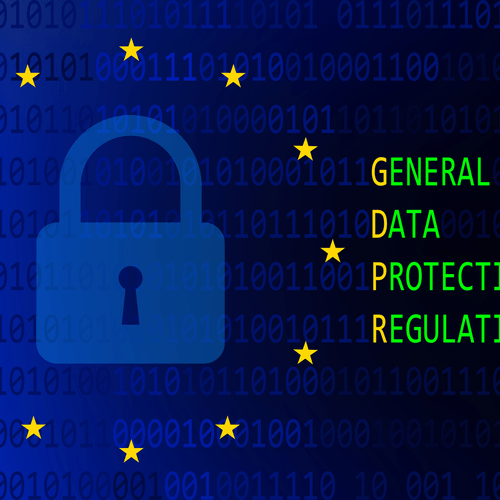And you’re relying on the service provider’s security plans to keep your information safe once you deploy it in the cloud. Many businesses have large fluctuations in their business operations (a significant increase in an e-commerce site’s web traffic during a holiday, for example) and require fast, immense scaling abilities. Through multi-tenant platforms, hyperscale cloud providers offer businesses the ability to scale up and down to meet their data access needs. Companies that develop and build applications often use a cloud service called Platform as a Service . This cloud technology gives organizations the tools to create, store, and deploy applications in a cloud environment.

Maintain compliance – most major regulations, such as PCI DSS and HIPAA, require monitoring. Organizations using cloud platforms should leverage observation tools to comply with these regulations and avoid penalties. MultitenancyMultitenancy is the backbone for many of the cloud benefits of shared resources (e.g., lower cost, flexibility, etc.), but it also introduces concerns about data isolation and data privacy. Identity and access management involves the design, configuration and administration of measures that authenticate, authorize and account for user and machine identities.
Container Vulnerabilities
Without taking active steps to improve their cloud security, organizations can face significant governance and compliance risks when managing client information, regardless of where it is stored. For those of you who intend to use one of the world’s leading cloud providers , cloud security is, as we touched on, less about setting up a secure cloud and more about using it securely. After all, these companies have already invested large amounts of capital into securing their systems. Although, anyone setting up their own cloud has more to consider – that’s where security architecture, protecting physical infrastructure, disaster recovery, maintenance and connection stability come in. A cloud security control is a set of security controls that safeguard cloud environments from vulnerabilities and minimize the fallout of malicious attacks.
- If you use software as a service , you may also need a cloud access security broker , which integrates and regulates access to SaaS software and helps identify specific risks related to the applications you are using.
- Fuel your cloud transformation with a modern approach to security with a zero trust strategy.
- These include network detection and response and artificial intelligence for IT operations .
- Private CloudsUsually dedicated and accessible to only a single organization.
For instance, businesses will do this through database permission settings. If you have a home network, use guest networks for your children, for IoT devices, and for your TV. If the cloud vendor gives you security controls that you can switch on, use them. If you are using encryption, remember that the safe and secure management of your encryption keys is crucial.
Configuration Security Posture Management (CSPM)
These include identity and access management , regulatory compliance management, traffic monitoring, threat response, risk mitigation, and digital asset management. Cloud security requires a combination of multiple strategies to ensure across-the-board protection from emerging threats and exposed vulnerabilities. Cloud environments include physical and virtual networks; data storage drives, data servers, virtualization frameworks, operating systems, runtime environments and several other components. This means multiple methods must be utilized to ensure there are no exposed vulnerabilities and threats can be mitigated. Cloud security is accomplished through a combination of data security, identity and access management ; data retention, business continuity planning and governance, such as threat prevention; detection and mitigation policies.

Train staff in the basics of cybersecurity, including how to detect threats and what to do in an emergency. Even the best security systems can fail, leading to the destruction of data and a disruption in cloud activities. Data retention and business continuity measures help organizations recover from emergencies and operate as normal. Common measures include keeping backups, maintaining redundant systems, and having detailed recovery plans for employees. Data security refers to measures taken to protect the information held in the cloud from direct attack.
Why cloud security is important
Managing authentication and authorization of user accounts also apply here. Access controls are pivotal to restrict users — both legitimate and malicious — from entering and compromising sensitive data and systems. Password management, multi-factor authentication, and other methods fall in the scope of IAM. CNAPP is a group of security solutions meant to assist in identifying, assessing, prioritizing, and adapting to risk in a range of cloud-native applications.
To better understand the security challenges cloud environments introduce, it can help to look at recent examples of what happens when things go wrong. Cloud security tools built with artificial intelligence and machine learning are effective against modern threat actors attacking the cloud. AI cloud https://globalcloudteam.com/cloud-application-security-testing/ technology augments security teams by automating the interpretation of attack signals, prioritizing alerts and incidents, and adapting responses based on the scale and attacker’s speed. When it comes to IAM, most organizations and solutions adopt what is known as the principle of least privilege.
cloud security
Misconfigurations can include leaving default administrative passwords in place, or not creating appropriate privacy settings. Once the compliance subject is identified, many actions can be taken, one of which is an audit. The audit should be conducted using a standardized approach and proven methodology, such as the American Institute of Certified Public Accountants’ SSAE 18 (Statement of Standards on Attestation Agreements, No. 18).
Virtualization alters the relationship between the OS and underlying hardware – be it computing, storage or even networking. This introduces an additional layer – virtualization – that itself must be properly configured, managed and secured. Specific concerns include the potential to compromise the virtualization software, or “hypervisor”. For example, a breach in the administrator workstation with the management software of the virtualization software can cause the whole data center to go down or be reconfigured to an attacker’s liking. Like any kind of data storage, cloud computing has its own set of security risks.
Why the Cloud Offers Better Protection Than Appliances
While sharing files on Google Drive or another service may be an easy way to share your work with clients, you may need to check that you are managing permissions properly. After all, you will want to ensure that different clients cannot see each other’s names or directories or alter each other’s files. Avoid accessing your data on public Wi-Fi, particularly if it doesn’t use strong authentication. However, use a virtual private network to protect your gateway to the cloud. Modify permissions to prevent any individual or device from having access to all your data unless it is necessary.
